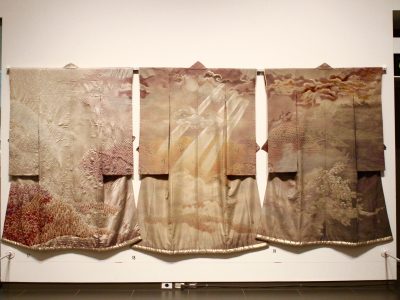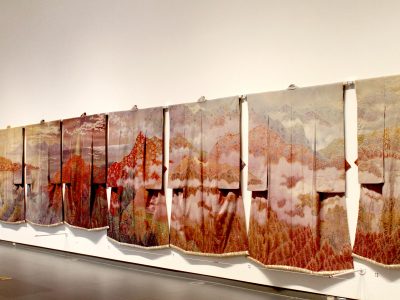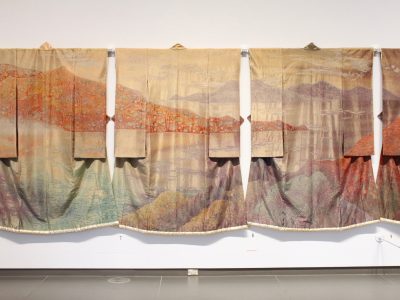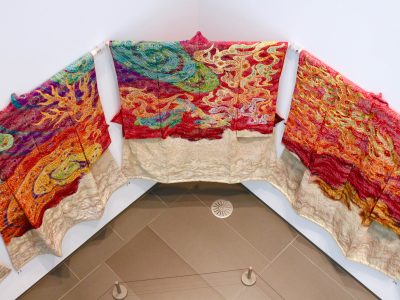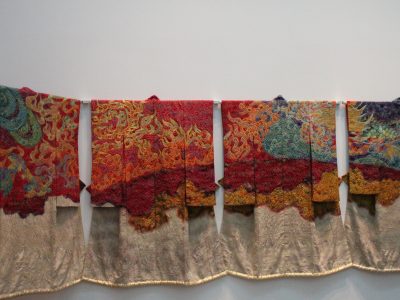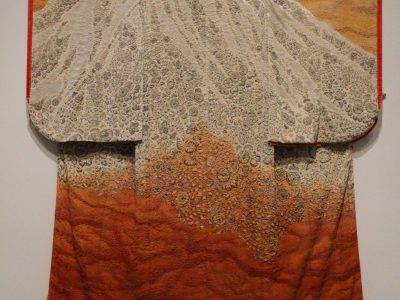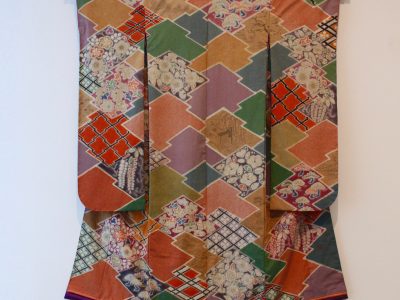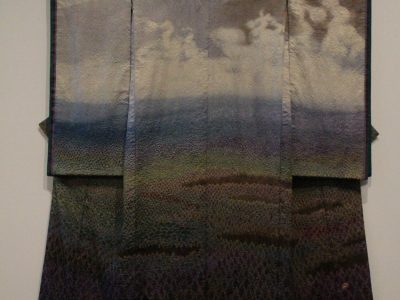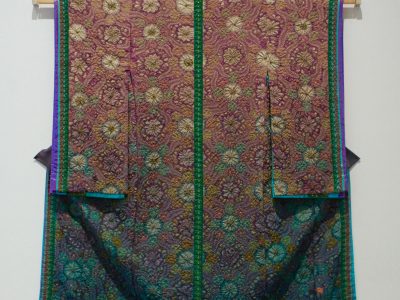Looking Back, Moving Forward – Reflecting on the Itchiku Kubota Exhibition

Looking Back, Moving Forward – Reflecting on the Itchiku Kubota Exhibition
WHAT DO THE MOUNTAIN SPIRITS PONDER?
November 22nd, 2018 – February 20th, 2019
The exhibition was organized by the International Chodiev Foundation.
Inarguably, this exhibition of master work by Japanese artist Itchiku Kubota was the most attended art exhibition in the gallery’s history, setting daily, weekly, monthly and overall exhibition attendance records. His lifework of reimagining a long lost technique, Tsujigihana, and of contemplating individual kimono into wide vistas, like murals, has etched his name into the annals of art and textile museums around the world.
TIMELINE OF THE EXHIBITION
Organizing the exhibition; shipping, handling of the international tour – May 2017 to November 2018
Uncrating of first kimono with VIPs and sponsors – October 26, 2018
When East Comes West; unveiling of signature kimono, ‘San’ at Four Points by Sheraton – November 6, 2018
Opening reception, ‘What do the Mountain Spirits Ponder?’ – November 22, 2018 to Feb. 20, 2019
ART AT HOME IDEAS
Kimonos: To really appreciate Kubota’s work, it’s important to know a little about the rich history of kimonos.
The kimono (きもの/着物) (lit.,”thing to wear” – from the verb ki (着), “to wear (on the shoulders)” and the noun mono (物), “thing”) is a traditional Japanese garment, and the national dress of Japan. The kimono is constructed of mostly rectangular pieces of fabric, cut from a specific bolt of fabric known as a tanmono. Various types of kimono indicate the wearer’s age, gender, the formality of the occasion, and less commonly, marital status, when worn; decoration, style of wear, and accessories also denote these. Types of kimono can range in formality from the extremely informal to the most formal of occasions.
Q: How has Kubota reimagined the use and presentation of kimono? What kind of Japanese cultural heritage is present in his work?
Textile practice: Kubota reimagined a lost style of process, called Tsujigihana. Let’s explore this in more detail.
Tsujigahana was a tie-dyeing technique which used drawings and foil impressions. This appeared in Japanese literature as a common style at the end of the 15th century and disappeared some 100 years later, only to be replaced by a more successful technique called “Yuzen”. The original Yuzen process used stencils to transfer a design onto fabric, and starch (known as nori) onto the fabric to allow colors to be added layer by layer. Tsujigahana, as is known, is a complex process comprising several steps: first comes the preliminary drawing where the pattern will be stitched on the white fabric, then comes the tying and thirdly, the dyeing of the fabric.
The details of the technique have been lost to the ages, and the original Tsujigahana technique remains a mystery. Kubota worked tirelessly to attempt to break this code, but with limited information simply could not. Instead, he finally opted to apply what he knew about it with other, more contemporary practices, thereby reinventing the practice.
Q: Kubota called this new style of work, ‘Itchiku Tsujigahana’. Do you feel that’s arrogant or an homage to the tradition?
Would you credit Kubota with inventing an entirely new textile practice, or do you feel he’s borrowed and applied several other styles together? Are there other artists in music or film who you feel adopt and renew older traditions in their practice?



